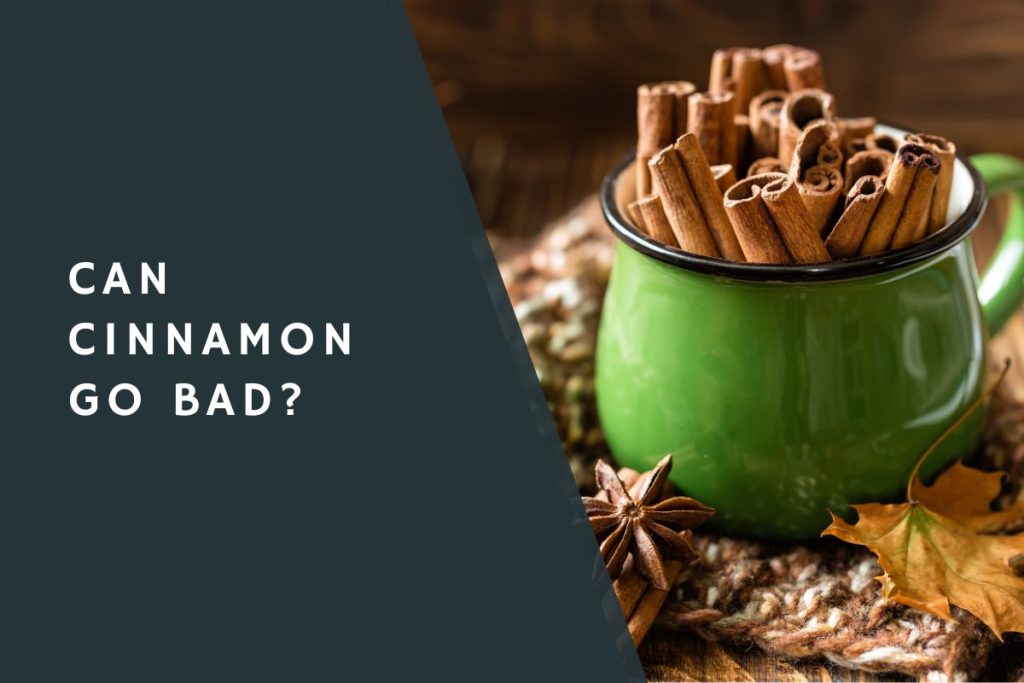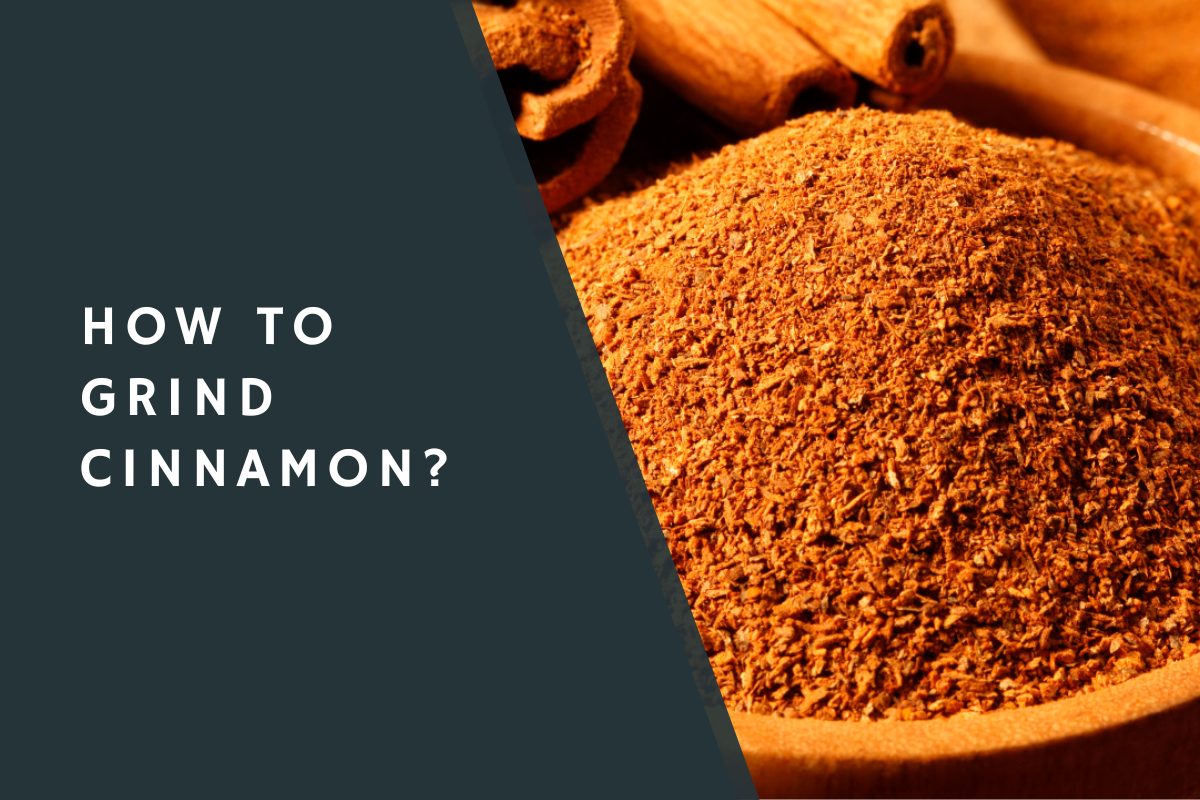Cinnamon is a popular spice that is widely used in cooking and baking. It is known for its warm, sweet, and slightly woody flavor and aroma, which can add depth and complexity to a wide range of dishes. However, like any food product, cinnamon can go bad over time.
Can Cinnamon Go Bad?
Cinnamon has a strong, spicy aroma. When left out in the open air, cinnamon is highly susceptible to the elements, especially rain. The active compound in cinnamon is cinnamaldehyde, which is why you smell cinnamon even after the spice is ground.
In this article, we will explore the shelf life of cinnamon, how to tell if it has gone bad, and how to store it to maximize its shelf life.

See Also: How to Freeze Cinnamon Rolls?
Can Cinnamon Go Bad? – Details
Shelf Life: Cinnamon is made from the bark of several species of trees, which is harvested, dried, and ground into a fine powder. There are two main types of cinnamon:
- Cassia cinnamon
- Ceylon cinnamon
Cassia cinnamon, which is more common and less expensive, has a stronger flavor and is more commonly used in cooking and baking.
Ceylon cinnamon, which is also known as “true cinnamon,” is sweeter and more delicate, and is often used in finer pastries and desserts.
The shelf life of cinnamon depends on the type of cinnamon, how it is stored, and how it is used.
Ground cinnamon has a shorter shelf life than whole cinnamon sticks, as the surface area of the ground cinnamon is exposed to the air, which can cause it to lose its flavor and aroma more quickly.
Ground cinnamon can last for about six months to a year if it is stored in an airtight container in a cool, dry place.
Whole cinnamon sticks, on the other hand, can last for several years if they are stored in the same way.
How to Tell if Cinnamon Has Gone Bad?
There are a few signs that you can look for to determine if your cinnamon has gone bad. One of the most obvious signs is a change in color.
If your cinnamon has turned a dark brown or black color, this is a sign that it has oxidized and is no longer fresh. Another sign is a change in flavor or aroma.
If your cinnamon has lost its signature warm, sweet, and woody flavor, or if it has a sour or musty smell, it is likely that it has gone bad.
You can also check the texture of the cinnamon to see if it has gone bad. If it is clumpy or hard, this is a sign that it has lost its moisture and is no longer fresh.
If you notice any of these signs, it is best to discard the cinnamon and replace it with a fresh batch.
Storing Cinnamon to Maximize Its Shelf Life
Proper storage is key to maximizing the shelf life of your cinnamon. Here are a few tips to help you store your cinnamon correctly:
1. Use an airtight container
The most important thing you can do to extend the shelf life of your cinnamon is to store it in an airtight container.
This will help to keep the air out and prevent the cinnamon from losing its flavor and aroma. Glass jars with tight-fitting lids are a good choice, as they are airtight and easy to label.
2. Store in a cool, dry place
Cinnamon should be stored in a cool, dry place to prevent it from going bad. The pantry or a cupboard away from the stove are good options.
Avoid storing cinnamon in damp or humid places, as this can cause it to spoil more quickly.
3. Keep it away from light
Cinnamon should also be stored in a place that is away from light, as exposure to light can cause the cinnamon to lose its color and flavor.
A cupboard or pantry is a good choice, as long as it is not directly exposed to light.
4. Use whole cinnamon sticks whenever possible
As mentioned earlier, whole cinnamon sticks have a longer shelf life than ground cinnamon.
If you have the option, try to use whole cinnamon sticks whenever possible, as they will last longer and retain their flavor and aroma for a longer period of time.
If you do need to use ground cinnamon, try to use it up as quickly as possible to ensure that it stays fresh.
5. Consider freezing ground cinnamon
If you don’t think you will be able to use up your ground cinnamon within a few months, you can consider freezing it to extend its shelf life.
To do this, simply place the ground cinnamon in an airtight container or plastic bag and store it in the freezer.
When you are ready to use it, allow it to thaw in the refrigerator before using it in your recipe.
Conclusion
Cinnamon is a versatile and flavorful spice that is commonly used in cooking and baking. However, like any food product, it can go bad over time.
The shelf life of cinnamon depends on the type of cinnamon, how it is stored, and how it is used.
To ensure that your cinnamon stays fresh, be sure to store it in an airtight container in a cool, dry place away from light.
Consider using whole cinnamon sticks whenever possible, and consider freezing ground cinnamon if you don’t think you will be able to use it up within a few months.
By following these simple tips, you can enjoy the delicious flavor and aroma of fresh cinnamon for as long as possible.
I hope this blog post is helpful for you in understanding can cinnamon go bad.
Read Also: How to Dissolve Cinnamon in Coffee?
I am an accomplished tech writer with a passion for simplifying complex technology concepts. With a background in Tech, James has dedicated their career to making the intricacies of the digital world accessible to a broad audience.








